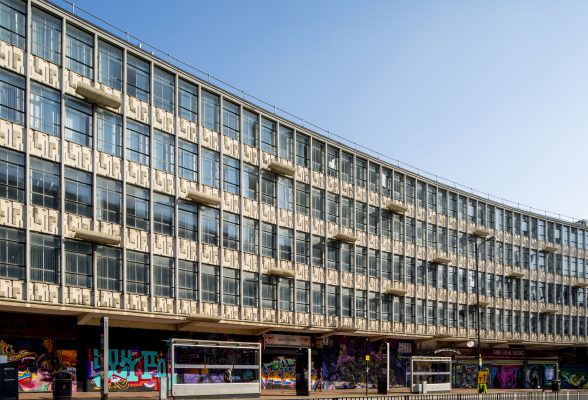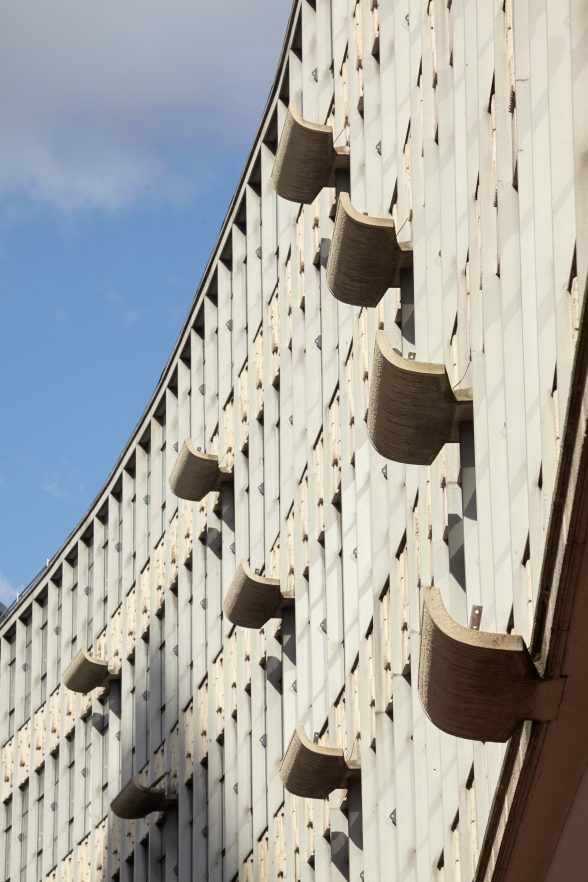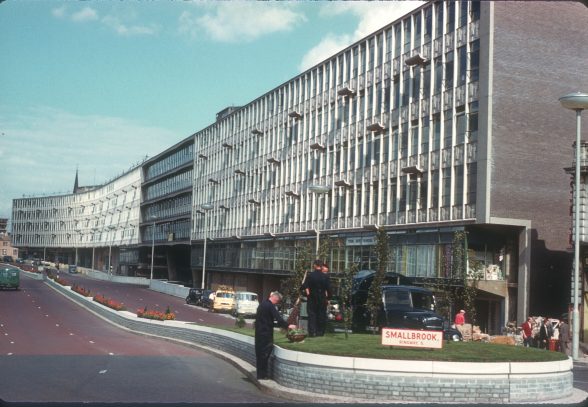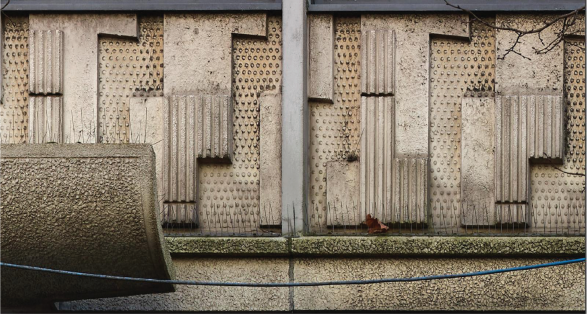This website uses cookies
This website uses cookies to enable it to function properly and to analyse how the website is used. Please click 'Close' to accept and continue using the website.



Image: Elain Harwood
UPDATE: On Thursday 1st February, Birmingham City Council planning committee voted 7-4 to approve the demolition of the Ringway Centre for the second time. We strongly believe this is the wrong decision for the city’s heritage, environment, businesses and residents.
C20 and fellow campaigners are taking legal advice to determine how best to proceed.
Ahead of a decisive vote by Birmingham City Council’s planning committee this Thursday (1st February 2024), Grand Designs presenter Kevin McCloud has backed the grassroots campaign to save Birmingham’s Ringway Centre – a landmark mid-century modern building currently threatened with demolition.
In a recorded video message (click here to watch), McCloud invokes Stonehenge, New York’s Grand Central Station, and London’s St Pancras Station, as now celebrated landmarks that at various points in their history, were also undervalued or faced the threat of demolition. Describing the Ringway as ‘a ribbon of craftsmanship, [and] of 1960s optimism’, he calls for the building to be ‘imaginatively reinvented’
Horizonal skyscraper
The Ringway Centre was designed by James Roberts between 1958-60 – the same architect behind the city’s celebrated Rotunda tower – and has been described by historians as ‘the best piece of mid-20th century urban design in Birmingham’. Known for its dramatic 230m long elevation that curves along Smallbrook Queensway, and sweeps over Hurst Street on great V-shaped pilotti (stilts), it is thought to be the longest single retail frontage in the country – a kind of ‘horizontal skyscraper’ straight from the Mad Men era.
Its dramatic curving façade is decorated with concrete sculptural panels in the style of abstract artist Ben Nicholson, and was illuminated by ‘bullhorn’ uplighters akin to those by Le Corbusier in Chandigarh, India. Indeed, it even acted as a stylish backdrop for a Clint Eastwood photoshoot when he visited the city in 1967.

Image: David Bleeker Architectural Photography
Legal obligation to reconsider
In September 2023, the Council’s Planning Committee narrowly approved (6-7) to demolish the Ringway Centre, and pave the way for a development by CEG and architects Corstorphine & Wright, of three residential tower blocks between 44 and 56 storeys. If it proceeds, this much derided scheme would have a devastating carbon cost of 187 million kg of CO₂ – equivalent to driving a family car around the earth 33,000 time.
Estelle Dehon, a leading KC with Cornerstone Barristers (experts on planning, environment and property law) acting on behalf of the Save Smalbrook Ringway campaign group, swiftly launched a legal challenge. This notified Birmingham City Planning Department that they had a legal obligation to reconsider the granting of permission, in light of several errors of fact in the Planning Officers original report.
It was erroneously stated to the Planning Committee that Historic England (the government’s statutory adviser on the historic environment) had “no objection” to the application, this assertion was then not corrected by the Planning Officer. In fact, Historic England had acknowledged the existing buildings’ architectural and historic merit, and raised concerns about what positive efforts had been undertaken to ensure the Centre’s preservation as a locally listed building.
The Planning Committee were further misled by the Planning Officers report in respect of the climate impact of the proposed demolition. In addition, full consideration was not given to the significance of the recent decision by the Secretary of State to refuse approval of the planning application for the M&S building in Oxford St on similar grounds.
The Council accepted the need refer the application back to the Planning Committee, in order that the decision can be made with access to full information. This second vote is due to take place on Thursday 1st February 2024.

Image: Phyllis Nicklin
The battle for ‘Brutiful’ Birmingham
The protracted battle for the Ringway Centre began in 2015, when plans were first submitted to demolish the complex, for a 26-storey tower block. C20 Society strongly objected and applied to list the building, yet planning permission was granted in 2017 following Historic England’s recommendation that it did not meet the criteria for national listing (though it remains locally listed). The latest plans would see the construction of 1,800 residential units, yet only 4.4% of these would classify as affordable housing – well below the councils own 35% target for developments of this scale.
While some examples like the Rotunda building (1965) and New Street station signal box (1965) may be Grade II listed and widely appreciated, in recent years the city’s post-war heritage has come under sustained assault, leading to many of the best examples being lost. Birmingham Central Library (1973) and the Post and Mail building (1965) are just some of those that have met the bulldozer or in the past decade.
The Save Smallbrook Ringway campaign group have developed their own alternative vision for the Ringway Centre site, demonstrating how the existing building could be significantly extended and retrofitted. Retaining as much of the existing fabric as feasibly possible, and working with existing floor levels and circulation, the alternative scheme reinforces the spatial and material qualities of the building whilst retaining the significant embodied carbon of the existing structure. The proposals would also enhance the Hurst Street gateway to the city’s Chinese Quarter and Gay Village.

Image: David Rowan
Kevin McCloud, designer, writer and broadcaster:
‘Birmingham is my closest city and I know the Ringway Centre well. It’s a beautiful long thing, a ribbon of craftsmanship, of 1960s optimism, it comes from that great period of regeneration of the city. It’s under threat of being demolished and once it’s gone, of course, it can never be properly replaced. We need to be rescuing more of the city’s post-war buildings.’
‘There are three tests for me that matter hugely in the conservation of our built environment:
Catherine Croft, Director – C20 Society
‘Birmingham councillors have the chance to recognise the enormous potential of this fabulous building, and to celebrate a decade when the city had a unique energy and optimism. Revitalising the Ringway makes sense not only in terms of outstanding heritage, but is the only responsible option in environmental terms too.’
The Save Smallbrook Ringway campaign group is a coalition of conservation, environmental, and community groups working together to the oppose demolition and ensure a sustainable approach to the future development of the Ringway Centre. They include: The Twentieth Century Society, Brutiful Birmingham, Birmingham Modernist Society and Birmingham’s Zero Carbon House, with support from ACAN (Architects Climate Action Network) and the Birmingham chapters of Extinction Rebellion and Friends of the Earth.

Become a C20 member today and help save our modern design heritage.